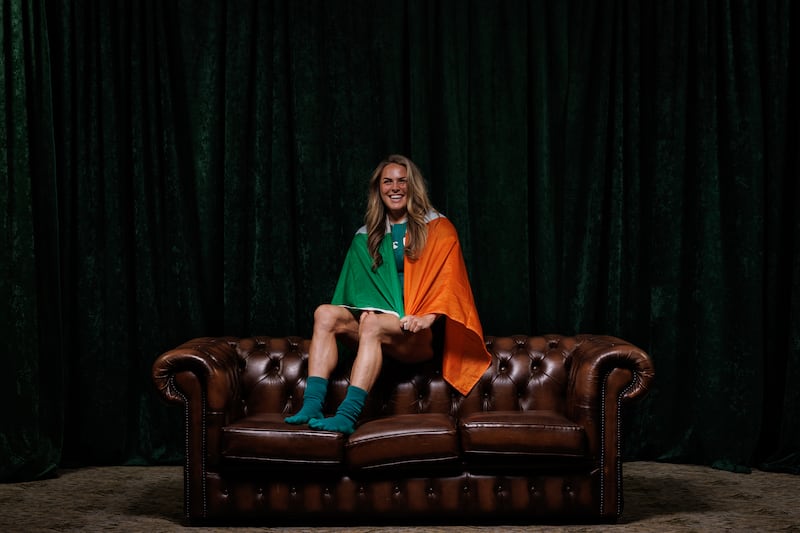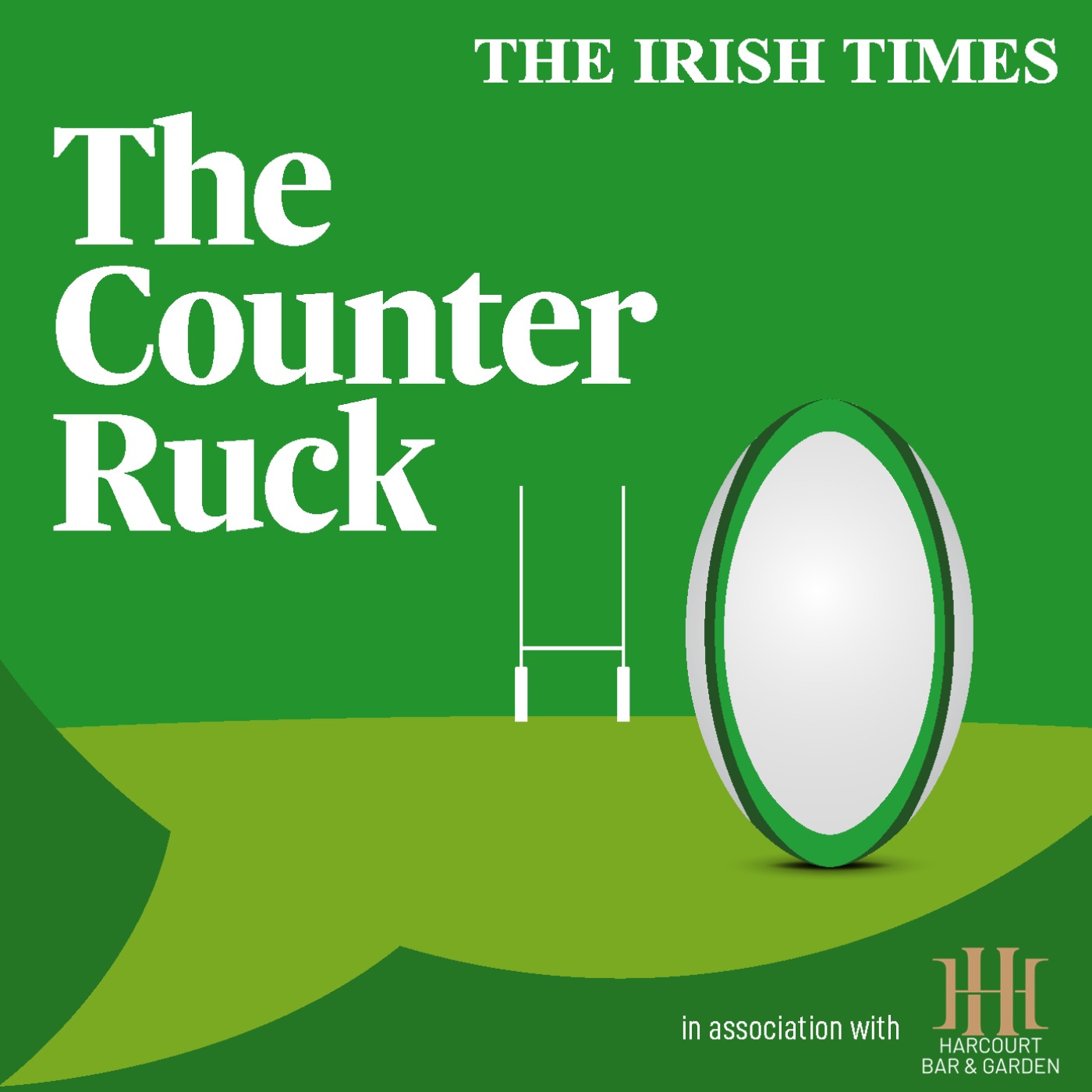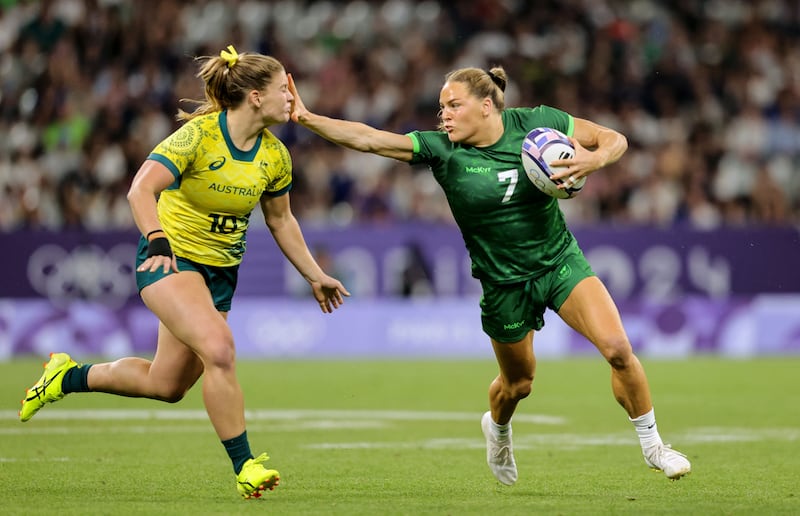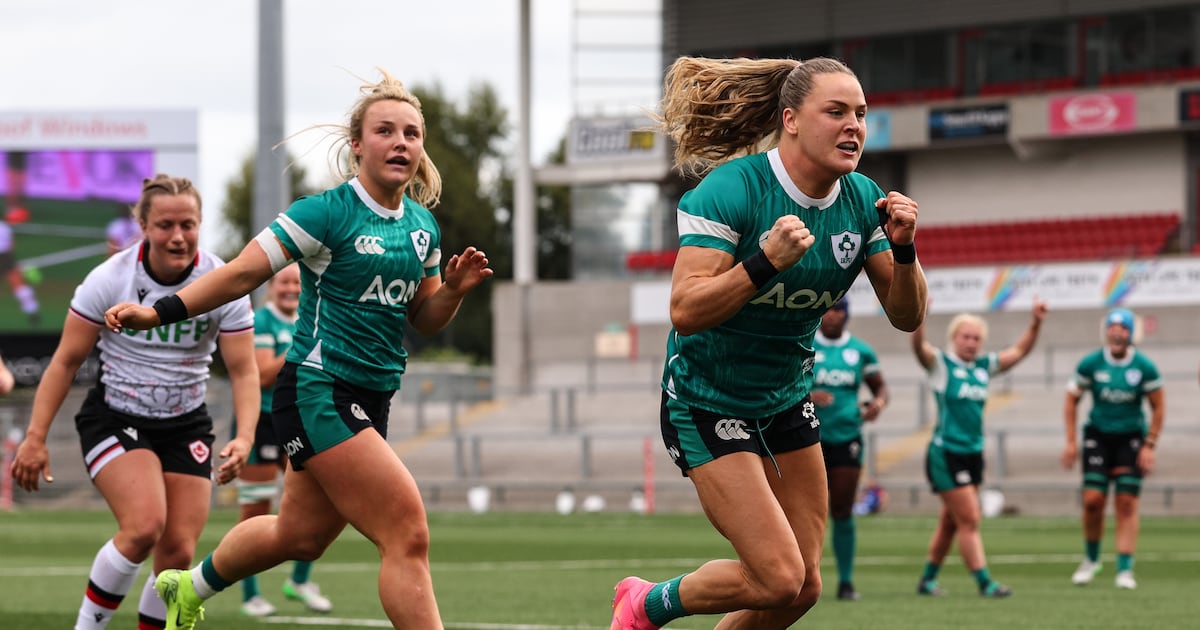It is mid-afternoon in the High Performance Centre (HPC) and the Ireland players are trying on their World Cup uniforms. Bundles of bags are laid out in a line along one touchline of the synthetic indoor pitch. It is Thursday, the day before the Irish women’s squad leaves for England ahead of their first World Cup Pool C match against Japan in Northampton next weekend.
In another corner, they watch a promotional video and in the middle of the pitch a giant Irish shirt lies flat on the ground having travelled the country.
It’s a giddy snapshot of a group of players ringing with hope and energising the vast empty space of the building.
Béibhinn Parsons is in the mood. It is the second year in a row she has experienced the uniform ritual. Last year, the Olympic Games; this year, the Rugby World Cup. The image is of the wonderous life of an elite athlete.
It has been far from that for Parsons. Seven years have passed since the phenom was drafted into the Irish sevens squad at 16 and then played in a Test match against the USA to make history as Ireland’s youngest senior international player. Now, she feels like she is at the beginning again.
“I honestly feel like I’m only getting started now. It really does feel like the Scotland game felt like a first cap,” she says.
“It felt like the start of my career even though I have been here a while. I just want a good clean run. I feel like I just want to tear into 15s and see how far I can go.”
 Béibhinn Parsons has overcome serious injuries and is raring to go ahead of Ireland’s World Cup opener in Northampton. Photograph: Ben Brady/Inpho
Béibhinn Parsons has overcome serious injuries and is raring to go ahead of Ireland’s World Cup opener in Northampton. Photograph: Ben Brady/Inpho
Eight months ago, Parsons faced a second lengthy spell on the sidelines after breaking her leg during a sevens tournament in Cape Town.
It was horrible misfortune, especially as it came so soon after suffering a broken fibula during Ireland’s quarter-final defeat to Australia at the Olympic Games in Paris.
 Ireland’s World Cup: limping to the start line or a golden opportunity?
Ireland’s World Cup: limping to the start line or a golden opportunity?
Two leg breaks in one year. She missed this season’s Six Nations but returned in July. There were some nerves.
“I think anyone that has suffered a big injury or a recurring injury . . . there is nobody who steps out onto the field – man or woman – in perfect shape,” she says.
“You are always carrying a bit of something. It’s having the mental strength to be able to deal with that and silence any of those thoughts.
“There is also a piece surrounding trusting your gut as well. If people are telling you that you are fine and you don’t feel fine and vice versa, you have to be able to distinguish what’s real and what’s not. That’s a skill in itself.
“I was nervous but what overruled that was all the excitement and the buzz around and the will to want to play. Any nerves I had I used as energy and right now I feel good.”
There are several players in the World Cup squad who also played in the Olympic Games. Staged in the Stade de France, the Paris event shattered rugby attendance records with 66,000 for the women’s tournament.
Stacey Flood, Amee-Leigh Murphy-Crowe and Eve Higgins were with Parsons at the Olympics and have combined to complete a potentially glorious 14 months of rugby.
 Ireland’s Béibhinn Parsons in action with Isabella Nasser of Australia in the quarter-final of the rugby sevens at the 2024 Olympics in Paris. Photograph: Dan Sheridan/Inpho
Ireland’s Béibhinn Parsons in action with Isabella Nasser of Australia in the quarter-final of the rugby sevens at the 2024 Olympics in Paris. Photograph: Dan Sheridan/Inpho
“In my head there is a comparison,” says Parsons. “It’s a mega sporting event with a lot of eyes and a lot of pressure and you need to invite that pressure in and see it as a privilege and be able to take that on your shoulders, or you can shy away from it.
“Going to the Olympics I realised there is only one option. If you want to perform you have to take it all in, good or bad. That’s what I did. I really loved the crowd, loved the energy, loved the people who were watching and I’m going to face this World Cup in the same way.”
The difference is that the World Cup is a slow burner over an initial three weeks and then a knockout phase. The sevens tournament was played at high octane for three days, starting on a Sunday in July and ending the following Tuesday.
“In some ways it’s a sprint whereas this World Cup will be a marathon and we know we’ll have good weeks and bad weeks,” adds Parsons.
“It’s about how resilient you can be and I think the hardest working and most resilient team will come out on top.”
It is no fun watching your team progress from the physiotherapist’s table, watching as players try and fill your boots.
But there have been positives along the seven-year journey. Even the double leg break, the forced removal and being out of the bubble from the competitive action comes with a sense of renewal and urgency to push on. No looking back.
“I think you come back with that freshness and you can look at the game from a bird’s eye view when you are out and then come back and see.
“You are removed. You have that calmness. You can see where you came from and what goals you have going forward. It’s a nice moment for reflection.
“But I don’t ever want to be in that position again. You can learn a lot and you come back with an edge because you know how hard you have worked and that doesn’t count for nothing in life.”
The Irish winger wanders back towards the bundles. At 23-years-old, a first World Cup shirt is waiting.

